( Susmita Rai 26 March 2015)
Though my motherland is economically backward, politically reactionary, culturally conservative, and socially uncivilized; this soil had given birth many intellectual giants, the great scientist comparable in their credit with Edison, Faraday, Harvey, Hardy, Edington, ……. Let us familiarize with their scientific contributions and research work… and above all their thoughts…. What they thought of science is? What was their views on nature? How they evaluated Indian situation? What they wanted for India to modernize? What was their dream for India? ….. Let us Learn, strive to achieve scientific bent of mind, struggle for scientific-technological revolution and modernization of our nation………
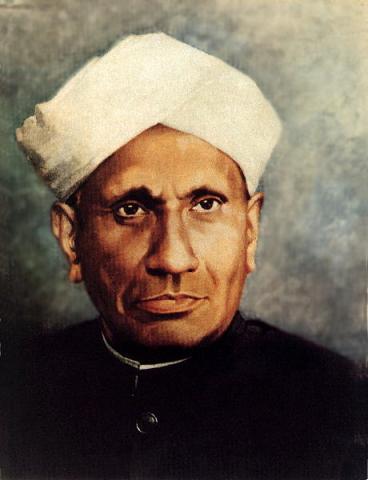
Sir CHANDRASEKHARA VENKATA RAMAN (C V RAMAN): Born – Thiruvanaikaval (Tiruchirappalli, Tamil Nadu) in November 7, 1888. Died – Bengaluru in November 21, 1970
1. Nobel prize winner of Physics in 1930: First Asian and non-European to receive Nobel prize in science
2. First Indian director of Indian Institute of Science, Bangalore
3.Inventor of Raman effect (Raman Scattering): When light transverse transparent material a portion of the deflected light changes the wavelength. Blue color of glaciers and Mediterranean sea!!! It gave further proof to quantum nature of light supporting quantum theory of photon by Einstein
4.Investigated the harmonic nature of sound of ‘tabla’ and ‘mridangam’. Forced vibrations of violin, propagation of sound in whispering galleries
5.Started ‘Travancore chemical and manufacturing Co. Ltd’ to manufacture Potassium chlorate (Kundara – Kerala) for matchbox industry, copper sulphate (Ernakulum – Kerala), Alum (Tuticorin – Tamilnadu)
“As ship was sailing through the Mediterranean sea, he got a doubt, as to why the water of the sea are looking blue. This doubt initiated his research on light. He found out by experiment that the sea looks blue because of scattering effect of the sun light”
National Science day is celebrated in India on 28 February to mark his famous discovery in 1928
“The true wealth of nation consists not in the stored-up gold but in the intellectual and physical strength of its people”
“In the history of science, we often find that the study of some natural phenomenon has been the starting point in the development of a new branch of knowledge”
“If the women of India take to science and interest themselves in the progress and advance of science, they will achieve what even men have failed to do. Women have one quality–the quality of devotion. It is one of the most important passports to success in science. Let us not imagine that intellect is a sole prerogative of males only in science”
“Man of science seeks to resolve the links between art, aesthetics, and the science. The man of science …seeks to resolve nature’s infinite complexities in to a few simple principles …..the laws of nature. In doing this , he subjects himself to a rigorous discipline … called logic. Science… is a fusion of man’s aesthetic and intellectual functions devoted to the representations of nature. Science is therefore the highest form of creative art”
“Look at the resplendent colors on the soap bubbles! Why is the sea blue? What makes diamond glitter! What makes Hubli So Special Ask the right questions, and nature will open the doors to her secrets”
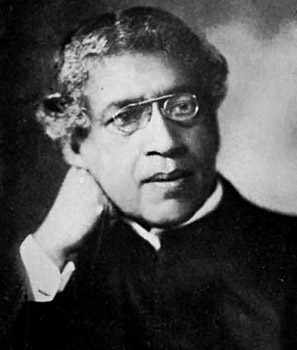
ACHARYA SIR JAGADISH CHANDRA BOSE (J C BOSE): Born – Mymensingh (Present Bangladesh) in November 30, 1858. Died – Giridih (Jharkhand) in November 23, 1937
1.First to use semiconductor junction to detect radio signals
2.Discovered the millimeter electromagnetic waves
3.Invented the Crescograph which measures the growth in plants by recording the movement of the tip of the plant or its root. Demonstrated the quivering of injured plant using his automatic recorders capable of registering extremely slight movements
4.Pioneer in Biophysics: Proved that the conduction of various stimuli in plant are of electric in nature not chemical (Major contribution)
5.Comparative study of the fatigue response of various metals and organic tissues (reduction in elasticity in cooled metal and organic cells)
6.Famous Books: “Response in Living and Non-Living”, “The nervous mechanism of plants”
“In November, 1894 at town hall of Kolkata, he ignited the gun powder and rang a bell at a distance using 5mm wave in presence of Lieutenant Governor Sir William Mackenzie”
“From the analysis of variation of cell membrane potential of plants under different circumstances – temperature, chemicals, microwaves, seasonal effect – he concluded that Plants can feel pain and understand affection just like an animal. ”
“ A crater on the moon is named in his honor”
“At that time, sending children to English schools was an aristocratic status symbol. In the vernacular school, to which I was sent, the son of the Muslim attendant of my father sat on my right side, and the son of a fisherman sat on my left…I listened spellbound to their stories of birds, animals and aquatic creatures. Perhaps these stories created in my mind a keen interest in investigating the workings of Nature. When I returned home from school accompanied by my school fellows, my mother welcomed and fed all of us without discrimination. Although she was an orthodox old-fashioned lady, she never considered herself guilty of impiety by treating these ‘untouchables’ as her own children. It was because of my childhood friendship with them that I could never feel that there were ‘creatures’ who might be labelled ‘low-caste’. I never realized that there existed a ‘problem’ common to the two communities, Hindus and Muslims.”
“How admirable is the Western method of submitting all theory to scrupulous experimental verification! That empirical procedure has gone hand in hand with the gift for introspection which is my Eastern heritage. Together they have enabled me to sunder the silences of natural realms long uncommunicative”
“I have sought permanently to associate the advancement of knowledge with the widest possible civic and public diffusion of it; and this without any academic limitations, henceforth to all races and languages, to both men and women alike, and for all time coming.”
“Science is a human heritage belonging neither to the east nor to the west…..They would be the worst enemy who would wish us to live only on the glories of past and die off from the face of earth in sheer passivity. By continuous achievement alone, we can justify our great ancestry. We do not honor our ancestors by false claims that they are omniscient and had nothing more to learn…….nothing can be more vulgar or more untrue than the ignorant assertion that the world owes its progress of knowledge of any particular race. The whole world is interdependent and a constant stream of thought has throughout ages enriched the common heritage of mankind. It is the realization of this mutual interdependence that has kept the mighty fabric bound together and ensured the continuity of permanence of civilization”
“From Karna’s low caste came rejection, came every disadvantage; but he always played and fought fair! So his life, though a series of disappointments and defeats to the very end – his slaying by Arjuna – appealed to me as a boy as the greatest of triumphs. Questioned of name and birth, Karna replies, “I am my own ancestor! You do not ask the might Ganges from which of its many springs it comes: its own flow justifies itself, so shall my deeds me!” Like my boyhood’s hero Karna, my life has been ever one of combat and must be to the last. It is not for man to complain of circumstances, but bravely to accept, to confront, and to dominate them…We stand here today and resume work tomorrow, so that by the efforts of our lives and our unshaken faith in the future we may all help to build the greater India yet to be”
“One of the fathers of radio science” IEEE
“Father of Bengali science fiction” “Famous opponent to any form of patenting”
“He was at least 60 years ahead of his time. In fact he had anticipated the existence of P-type and N-type semiconductors” 1977 Nobel Laureate Sir Nevill Mott
“His model of an electric eye which records electric signals message received from outside world, physical model of memory as a mechanism for storing information justified this being considered a precursor of the modern discipline of cybernetics”
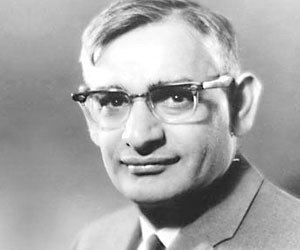
Har Gobind Khorana: Born – Raipur (Punjab, Pakistan) in January 9, 1922. Died – Concord (Massachusetts, USA) in November 9, 2011
1.Nobel prize winner of Physiology/Medicine in 1968: show the order of nucleotides in nucleic acid which carry the genetic code of the cell, control the cell’s synthesis of protein
2.First scientist to chemically synthesize oligonucleotides – short single stranded DNA/RNA
3.Synthesized artificial gene, the origin of recombinant DNA technology: Applications in cloning
4.Studies on bacteriorhodopsin, a membrane protein that converts light energy into chemical energy by creating protein gradient
“In the distant future, the total chemical synthesis of macromolecules possessing biological function must also be considered. The problems are vastly more complex than anything previously undertaken by experimental organic chemistry. Nevertheless, Biology urgently asks: Will Organic Chemistry extend its horizons and accept the challenge?”
“Almost anyone studying biology today, they may not know they are studying Khorana, but they are”
“He discovered a process that’s fundamental to life”
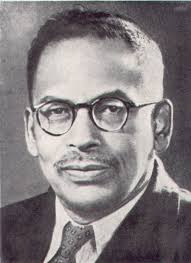
MEGHNAD SAHA: Born – Shaoratoli (Dhaka, Present Bangladesh) in October 6, 1893
Died – Delhi in February 16, 1956
1.Formulated ‘Saha ionization equation’ to determine the ionization state of various elements making up the star
2.Invented the instruments to measure the weight and pressure of solar rays
3.Founder of ‘Saha Institute of Nuclear Physics’. Leading spirit in organizing the scientific societies like the National Academy of Science, Indian Institute of Science and the Indian Association for the Cultivation of Science.
4.Chief architect of river planning in India. Prepared the original plan for Damodar Valley Project.
“It will be admitted from what has gone before that the temperature plays the leading role in determining the nature of the stellar spectrum….. stellar spectra may be regarded as unfolding to us, in an unbroken sequence, the physical processes succeeding each other as the temperature is continually varied from 3000° K to 40,000° K”
“Scientists are often accused of living in the “Ivory Tower” and not troubling their mind with realities….. But science and technology are as important for administration now-a-days as law and order. I have gradually glided into politics because I wanted to be of some use to the country in my own humble way”
“His ionization equation, which opened the door to stellar astrophysics ” – Jayant Narlikar
“His place in the history of astrophysics and in the history of modern science in India is unique”– Subramanian Chandrasekhar
“His theory of thermal ionization is the twelfth most important landmark in the history of astronomy” – Arthur Stanley Edington
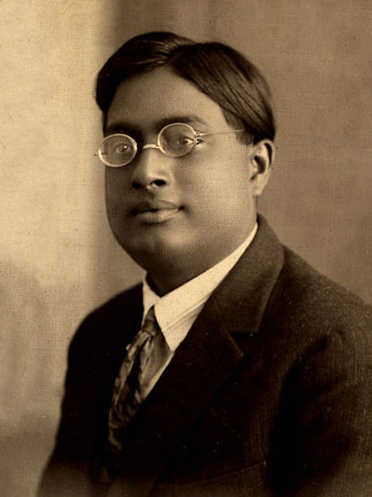
SATYENDRA NATH BOSE (S N BOSE): Born – Kolkata (West Bengal) in January 1, 1894.
Died – Kolkata (West Bengal) in February 4, 1974
1.A set of microscopic particles are named after him as Bosons in his honor by Paul Dirac
2.Bose-Einstein Statistics: Derived Plank’s radiation law using a novel way of counting states of identical particles which lead to the foundation of Quantum statistics
3.Equation state for real gas with Meghnad Saha: Bose-Einstein Condensate – A state of matter of dilute gas of bosons cooled to temperature very close to absolute zero where the macroscopic quantum phenomenon are visible – Laser and super cooled helium
4.Worked for extraction of Helium in hot springs of Bakreshwar
5. Versatile Genius: Scholar in Chemistry, Zoology, Geology, Anthropology, Bengali, English, French, German, Sanskrit, Poetry,………
“His work stood at the transition between the ‘old quantum theory’ of Planck, Bohr and Einstein and the new quantum mechanics of Schrodinger, Heisenberg, Born and Dirac” – Partha Ghose
“His work on particle statistics, which clarified the behavior of photons in an enclosure and opened the door to new ideas on statistics of Microsystems that obey the rules of quantum theory” – Jayant Narlikar
“You don’t know who he was? Half the particles in the universe obey him”
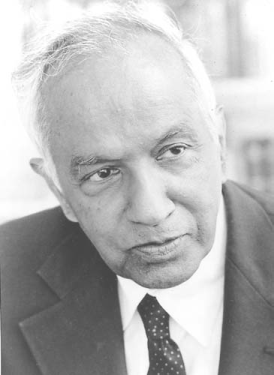
SUBRAHMANYAN CHANDRASEKHAR: Born – Lahore (Present Pakistan) in October 19, 1910. Died – Chicago (ILLINOIS , USA) in August 21, 1995
1.Nobel prize for Physics in 1983 for theory of black holes on the later evolutionary stages of massive stars
2.“Newton’s Principia for Common Readers”: Re-writing Newton’s book replacing cumbersome geometrical arguments with simple calculus methods
3.Discovered the ‘Astrophysical Chandrasekhar limit’ (1.44): Maximum mass of a white dwarf stars in terms of solar mass
4.Area of research spread from mathematical theory of black holes, theory of colliding gravitational waves, quantum theory negative ions of hydrogen, hydro magnetic stability, general relativity
“A classical applied mathematician whose research was primarily applied in astronomy and whose like will probably never be seen again”
“NASA named one of its great observatories after his name”
“I discovered what true mathematical elegance is from Subramanian Chandrasekhar.“ His disciple Carl Sagan
“The black holes of nature are the most perfect macroscopic objects there are in the universe: the only elements in their construction are our concepts of space and time”
“The pursuit of science has often been compared to the scaling of mountains, high and not so high. But who amongst us can hope, even in imagination, to scale the Everest and reach its summit when the sky is blue and the air is still, and in the stillness of the air survey the entire Himalayan range in the dazzling white of the snow stretching to infinity? None of us can hope for a comparable vision of nature and of the universe around us. But there is nothing mean or lowly in standing in the valley below and awaiting the sun to rise over Kanchenjunga”
“Science is a perception of the world around us. Science is a place where what you find in nature pleases you……. What a scientist tries to do essentially is to select a certain domain, a certain aspect, or a certain detail, and see if that takes its appropriate place in a general scheme which has form and coherence; and, if not, to seek further information which would help him to do that”
“It is, indeed an incredible fact that what the human mind, at its deepest and most profound, perceives as beautiful finds its realization in external nature.… What is intelligible is also beautiful…… Indeed I would feel that an appreciation of the arts in a conscious, disciplined way might help one to do science better ”
“I should like to preface my remarks with a personal statement in order that my later remarks will not be misunderstood. I consider myself an atheist” During discussion on Bhagavat Gita
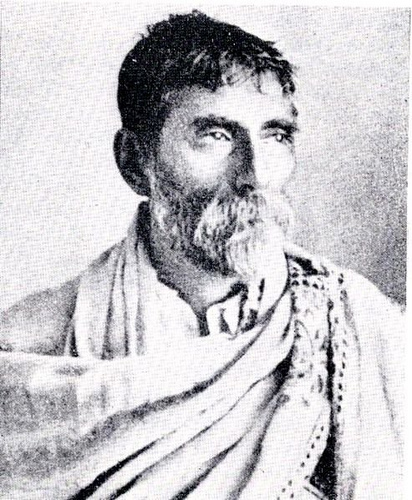
Prafulla Chandra Ray (P C Ray): Born – Khulna (Present Bangladesh) in August 2, 1861.
Died – Kolkata (West Bengal) in June 16, 1944.
1.Founder of Indian Chemical Society in 1924 – Premier scientific society of chemists in India
2.Research in Ayurveda, nitrites and hyper nitrites of different metals, compounds of gold/platinum/iridium with organic sulphides, double salts, homomorphism, fluorination, preparation of stable Mercurous Nitride (Mercury is conspicuous by its special property compared to Zn and Cd in the same group). 150 research papers published (Nature, journal of royal society)
3.“A history of Hindu chemistry from the earliest times to the middle of sixteenth century”: 12 years research work. His unique contribution before the publication of J.D Bernal’s books.
4.Founder of India’s first pharmaceutical company – Bengal chemicals and pharmaceuticals and provided technical advice in for textile mills, soap factories, sugar factories, and ceramic industries in early modern India
5.Nationalist, Social reformist and Philanthropist: Used the British media/politicians to propagate against British exploitation in India, Organized ‘Bengal relief committee’ for people affected by flood in 1923, preached against caste system and worked for the upliftment of lower castes
“He used to collect bones of dead cattle and store them in the yard, much to the annoyance of the neighbors due to foul smell … made the bone fire and police came… However, he could produce phosphate of soda having medicinal tonic properties…. In 1894 he discovered mercurous nitrite and later ammonium nitrite used as fertilizer as well as explosive… He was acclaimed as the Master of Nitrites….sometimes during class time, he took a piece bone, heat in a Bunsen burner and then suddenly drop inside his mouth to show that it is just calcium phosphate, and that it did not matter which animal the bone came from”
“It is difficult to believe that the man in simple Indian dress wearing simple manners could possibly be the great scientist and professor” Mahatma Gandhi
“The Advaita philosophy which was held in high esteem by the learned section of Indians, and the Hindu custom of Casteism were hurdles in the pursuit of truth”
“The reason for decline of the rich culture of medicine and surgery of ‘Charaka’ and ‘Susruta’ tradition was the introduction of the code of conduct by ‘Manu’. According to ‘Susruta’, the dissection of dead bodies is a sine qua non to the students of surgery and his high authority lays particular stress on knowledge gained from experiment and observation. But ‘Manu’ would have none of it. The very touch of corpse, according to ‘Manu’ is enough to bring contamination to the sacred person of Brahmin….shortly after the time of ‘Bhagavata’, the handling of a lancet was discouraged, and anatomy and surgery fell into disuse and became to all intents and purposes lost sciences to the Hindus”
“Vedanta philosophy to a large extent responsible for bringing the study of physical science into disrepute…. Science ask questions about the material world and seeks answers….If one believes that the material world itself is unreal or ‘maya’, it is impossible for him to harbor curiosity about it, let alone seeking truth about it”
“Are we humans? All those haris, doms, chamars, malis, bagdis, and maithals – who live like animals around your house in the darkness of ignorance – what have you done for them over the centuries? You do not touch them, do not allow them to come close, you drive them away like dogs. You can take your pet dog on your lap, but if the healthy child of a cobbler crawls up your stairs, you roar in the name of your caste and religion”
“The caste system was established de novo in a more rigid form. The drift of ‘Manu’ and of the later ‘Puranas’ is in the direction of glorifying the priestly class, which setup most arrogant and outrageous pretensions. The arts/science being thus relegated to the low castes and the professions made hereditary…. The intellectual portion of the community being thus withdrawn from active participation in the art/science, the how and why of the phenomena- the coordination of the cause and effect – were lost sight of, and the spirit of enquiry gradually died out among a nation naturally prone to speculation and metaphysical subtleties, and India for once bade adieu to experimental and inductive sciences. Her soil was rendered mortally unfit for the birth of a Boyle, a Descartes, or a Newton and her very name was all but expunged from the map of the scientific world”
“Teaching for half a century, I have told thousands of students that solar and lunar eclipses are not caused by the demons ‘Rahu’ and ‘Ketu’ devouring the sun and the moon; and that the eclipses do not end due to the prayers that demons releasing the sun and moon…. But during the eclipses….the moment prayer processions comes on the streets…these educated people also join the processions and throw away their food…..emancipation of nation is impossible if people engage in this type of hypocrisy, if they cannot accept the truth openly”
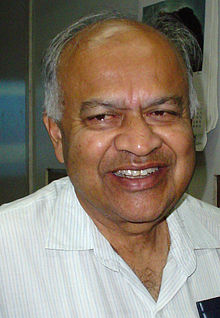
Dr. Jayant Vishnu Narlikar: Born – Kolhapur (Maharashtra, India) in July 19, 1938
1.Developed ‘Theory of conformal gravity’ (Hoyle-Narlikar Theory) by combining Einstein’s theory of relativity and Mach’s principle
2.Founder director of Inter-University Centre for Astronomy and Astrophysics
3.Proposed a model alternate to ‘Big bang theory’ for the origin of universe
4.Pioneering experiment designed to sample air for microorganisms in the atmosphere at heights of up to 41km (Life cam to earth from extraterrestrial world)
“During an examination the question paper read, ‘do any six questions, all questions carry equal marks’. But I attempted more than six questions and wrote for the examiner, “examine any six questions, all questions carry equal marks”
“If you see firm evidence of neutrinos arriving at the detector before they are sent, that can’t happen in a Steady state cosmology, so the big bang has to be right. Or equivalently, no faster-than-light neutrinos, no big bang”
“Our test asked a focused question and the astrologers could not point toward any ambiguity in interpretation. We told the astrologers that the real predictive success could be claimed only at the 70% level for their sample size. The test demonstrated the hollowness of the basic claim of astrology” On an experiment conducted to verify the claims of Astrology”
“In the Vedic era, there was never a seven-days-a-week concept. Similarly, astrologers were also not known at the time. They came later, when Alexander came to India and brought several of them along with him. Indians carried forward astrology”
“In our society, all levels, not only uneducated but educated as well are dominated by superstitions of various kinds. The superstitions of the educated are only more sophisticated than those of the uneducated. So one needs to introduce real knowledge in place of superstitious belief. You need to explain to people believing in superstitious ideas that the ideas are not correct and this can be verified experimentally. When doing science popularization you have to express some facts of the real universe or the real world to the person who is not willing to believe in it and if you express it in a very pedantic way or say to the person that you are a fool, you should not believe this then it is not good because then he will believe in his superstitions even more. So you have to persuade him to think for himself, you don’t tell him what to believe but you ask him to try this experiment and see what is the reality. So that way you may be able to convince the person”
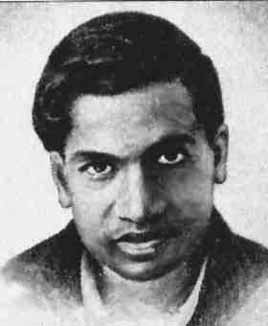
SRINIVASA RAMANUJAN: Born – Pallipalayam (Erode, Tamil Nadu) in December 22, 1887.
Died – Chetput (Chennai, Tamil Nadu) in April 26, 1920.
“I can compare him only with Euler or Jacobi”
“ I remember once going to see him when he was ill at Putney. I had ridden in taxi cab number 1729 and remarked that the number seemed to me rather a dull one, and that I hoped it was not an unfavorable omen. “No”, he replied, “it is a very interesting number; it is the smallest number expressible as the sum of two cubes in two different ways. 1729 = 1^3 + 12^3 = 9^3 + 10^3 ” Godfrey Harold Hardy
His birthday is celebrated in India as National Mathematics Day
“No mathematician should ever allow him to forget that mathematics, more than any other art or science, is a young man’s game. … Galois died at twenty-one, Abel at twenty-seven, Ramanujan at thirty-three, Riemann at forty.” – G.H. Hardy
“Srinivasa Ramanujan was the strangest man in all of mathematics, probably in the entire history of science. He has been compared to a bursting supernova, illuminating the darkest, most profound corners of mathematics, before being tragically struck down by tuberculosis at the age of 33… Working in total isolation from the main currents of his field, he was able to re-derive 100 years’ worth of Western mathematics on his own. The tragedy of his life is that much of his work was wasted rediscovering known mathematics.” – Michio Kaku
“An equation means nothing to me unless it expresses a thought of God”
“There is great exhilaration in breaking one of these things. … Ramanujan gives no hints, no proof of his formulas, so everything you do you feel is your own”

PRASANTA CHANDRA MAHALANOBIS: Born – Kolkata (West Bengal, India) in June 29, 1893. Died – Kolkata (West Bengal, India) June 28, 1972.
1.Founder of Indian Statistical Institute
2.Founded the way of comparing and grouping populations using multivariate distance measure called Mahalanobis distance based on the Indo-European intermarriage studies
3.Large scale sample surveys: Agriculture research – tea drinking habit, crop yield, plant disease
4.Research on speech pathology (Communication and swallowing disorders)
5.Prominent contributor for 5-year plan for India: Mahalanobis Model – Shift in industrial investment pattern towards building up domestic consumption goods sector by capital goods production
“No technique of random sample has, so far as I can find, been developed in the United States or elsewhere, which can compare in accuracy with that described by him” Sir Ronald Aylmer Fisher, English Statistician and evolutionary biologist
“Everybody knows him as the founder of the Indian Statistical Institute, the architect of the second five year plan, a close associate of Rabindranath Tagore and as one who had richly contributed to the social, cultural and intellectual life”
“India has a medieval and authoritarian structure of society and the tradition of science is not yet strong. The power of government officials is increasing as an inescapable result of the pervasive authoritarian character of Indian society”
“We shall naturally devote closer attention to the collection and analysis of data relating to India, but we shall try to study all Indian questions in relation to world problems….”
“The transformation of the advanced countries to their present stage has been brought about by the acceptance of a scientific and rational view of life and nature. The scientific view has already permeated in a large measure the administrative organizations of the advanced countries. The scientific revolution, the social revolution and the industrial revolution are three aspects of the modernization of every society; these three aspects may be distinguished but cannot be separated. The rate of economic growth in every country is determined both directly and indirectly by the rate of progress of science and technology; directly through the utilization of the results of research and development, and indirectly through institutional changes brought about by the increasing influence of the scientific out-look and tradition”
“Without the progress of equality and improvement in the level of living ….there would be grave repercussions on the rest of the world. The problem of the underdeveloped country is….of greater concern….. international rivalries and tensions arise from the desire to establish spheres of influence over underdeveloped areas. A quick transformation of the underdeveloped countries into industrialized economies would reduce ….. the tension between East and West”
“In the absence of social awareness and appreciation of the scientific objectivity among sufficiently large number of civil servants or political leaders, the need of validity has not yet been accepted in the official statistical system in India.”
Why we need Science?
Just like in other civilizations of world (Babylonian, Chinese, Greek, etc), Indian Intellectual made due contributions to body of human knowledge – Astronomy, medical science, mathematics, metallurgy, etc. With the emergence of religion as a powerful force in social life, culture and politics, Europe went into ‘dark age’ with the total stagnation of Intellectual life. Same for India too…. However, after over 1000 years renaissance, enlightenment rationalism and democratic revolutions liberated European people from centuries of inhuman life. An era of exponential growth in science and technology was the result in western society. Unfortunately, in India despite the genuine efforts of dozens of great scientists to liberate Indians from obscurantist religious psychology, their dream to establish scientific bent of mind and democratize and modernize Indian society still remains unfulfilled. Alas…our mother land, India could not come out of the ‘dark age’ yet.…. Atmosphere in our country is becoming more intolerant to ideals of scientific renaissance, and intellectual enquiries. “It shall be the duty of every citizen of India …to develop the scientific temper, humanism and spirit of inquiry and reformism” (The constitution of India, Article 51A)

whoah this weblog is fantastic i love reading your articles.
Stay up the great work! You know, many persons are hunting around for
this info, you can help them greatly.
LikeLike